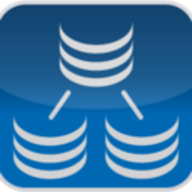

JumpMind SymmetricDS and NetApp Snapshot compete in data management solutions. While JumpMind SymmetricDS is preferred for pricing and support, NetApp Snapshot stands out with advanced features and value.
Features: JumpMind SymmetricDS focuses on database synchronization, cross-platform replication, and real-time integration. It supports a wide range of databases. NetApp Snapshot is centered around data backup and recovery, offering instant snapshots and minimal impact on storage. The core distinction is SymmetricDS's synchronization focus versus NetApp's data protection emphasis.
Ease of Deployment and Customer Service: JumpMind SymmetricDS offers straightforward deployment and dedicated support, easing integration across diverse environments. NetApp Snapshot has robust deployment options and reliable customer service but is more complex to implement, especially in cross-platform settings.
Pricing and ROI: JumpMind SymmetricDS has competitive setup costs, providing a strong ROI through efficient replication and reduced downtime. NetApp Snapshot might have higher initial costs but its data protection features justify the investment with long-term savings and data integrity. SymmetricDS provides a lower entry cost, whereas NetApp offers long-term benefits.

JumpMind SymmetricDS is a powerful data replication software that provides synchronization software solutions for both databases and filesystems. This software is platform-independent and web-enabled as well as database agnostic. JumpMind SymmetricDS creates prompt bi-directional data replication while scaling to a large amount of nodes and working in close to real time across both WAN and LAN networks. This allows companies to integrate data using the feature for continuous change data capture.
This data replication software allows companies with limited network bandwidth or bad connectivity to benefit from excellent cloud conditions. The greatest benefit of JumpMind SymmetricDS is its vast integration across databases, streaming platforms, and data warehouses. Some of the relational databases where this data replication software can be used include Oracle, PostgreSQL, MySQL, Sybase, Informix, Ingres, Tiber, and VoltDB. NoSQL databases like MongoDB, Apache Cassandra, and Azure Cosmos are also compatible with the JumpMind SymmetricDS data replication software. The data warehouses that are compatible with this software include Teradata, SAP HANA, Azure-SQL server by Microsoft, BigQuery, Amazon Redshift, Pivotal Greenplum, and Snowflake data warehouse. Providing coverage of so many databases and warehouses allows broad outreach of the JumpMind SymmetricDS across many different companies and users.
JumpMind SymmetricDS offers many valuable features, including:
Other features include tools for conflict detection and resolution, embedding and extending, filtering, subsetting, and transforming.
The benefits of using JumpMind SymmetricDS include:
According to the CEO at a non-profit, JumpMind SymmetricsDS is fully featured and is also very easy to use and install. He finds it to be self-explanatory to use and says that their support is very good.
NetApp Snapshot is a data replication software that works through snapshot copies, crucial for the recovery of data. These copies are used as safe points for rollback before upgrades or patches. NetApp Snapshot provides prompt data replication which is also highly space-efficient, and provides users with the full management and control of their data and its copies. Through the various solutions the Snapshot technology has introduced, companies receive enhanced stability, functionality, and performance, as well as storage efficiency.
NetApp Snapshot uses two types of snapshot technologies to handle data replication: Copy on Write (COW) and Redirect on Write (ROW). The COW technologies make a copy of the original information and then only after the replication process is completed does the system overwrite the modified data into the original blocks. In contrast, ROW redirects the snapshots to new storage blocks, updating pointers to those blocks, which always point to the original location. When NetApp Snapshot combines the two technologies, it allows customers to save storage efficiency by way of deduplication and compression.
NetApp Snapshot’s valuable features include:
The benefits of using NetApp Snapshot include:
Gregg N., Manager of Data Center Services at TTi Power Equipment, states that the primary use of NetApp Snapshot by his organization is as a data-protection solution in the cloud and in the data center. He points out that this data duplication software is very user-friendly, extremely stable, and scalable.
Edgar M., Sr. Data Protection Engineer at DataPivot Technologies, uses NetApp Snapshot for its monitoring or clone capabilities, and he agrees that the solution is very stable.
According to George A., CEO at BDPR Technologies Limited, the most valuable features of NetApp Snapshot are the integration with other vendors and customization.
We monitor all Data Replication reviews to prevent fraudulent reviews and keep review quality high. We do not post reviews by company employees or direct competitors. We validate each review for authenticity via cross-reference with LinkedIn, and personal follow-up with the reviewer when necessary.